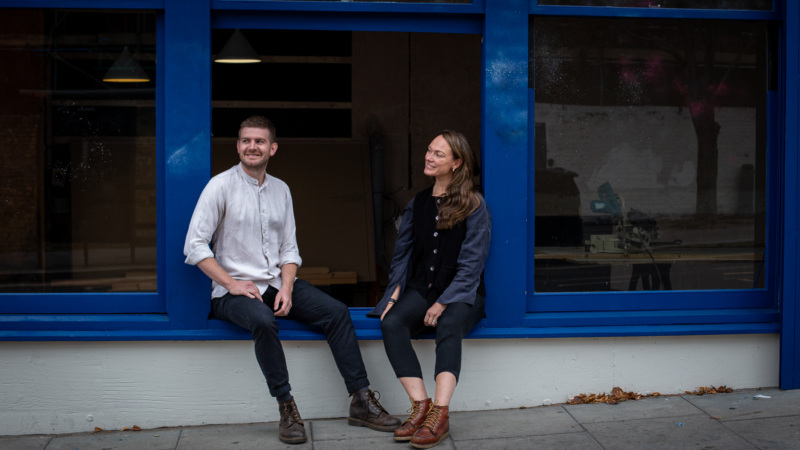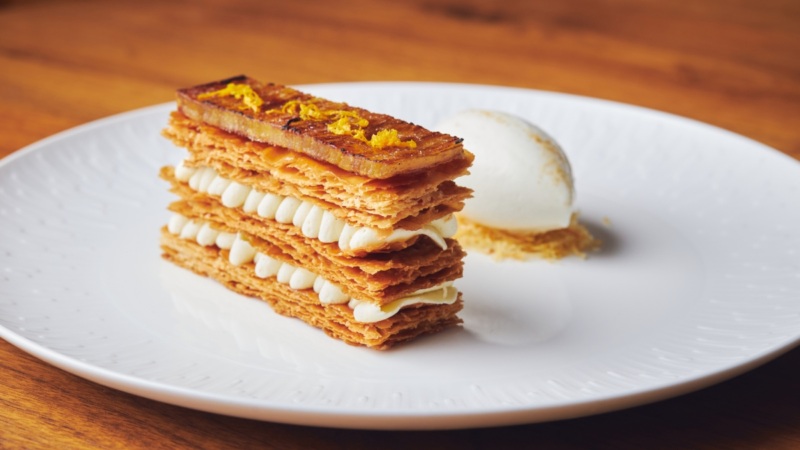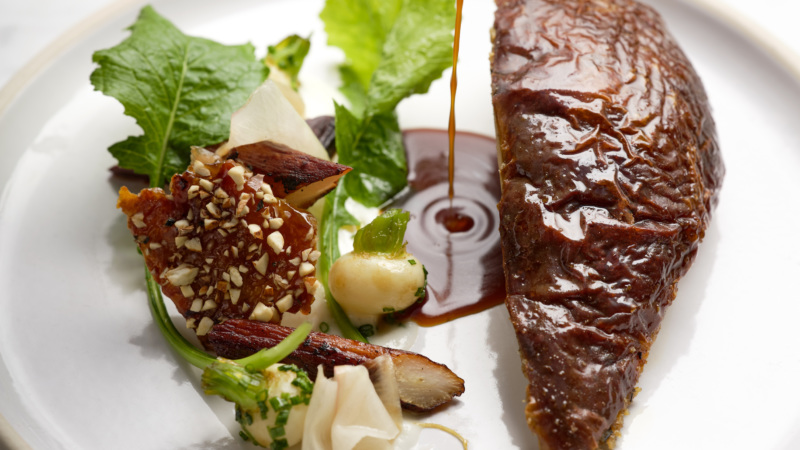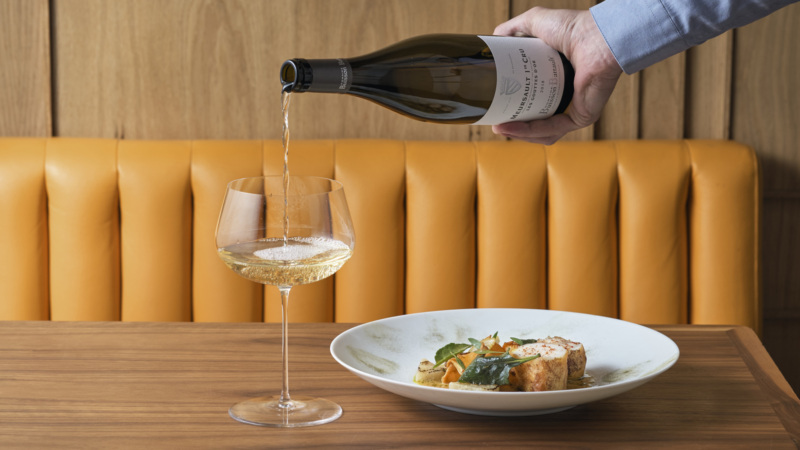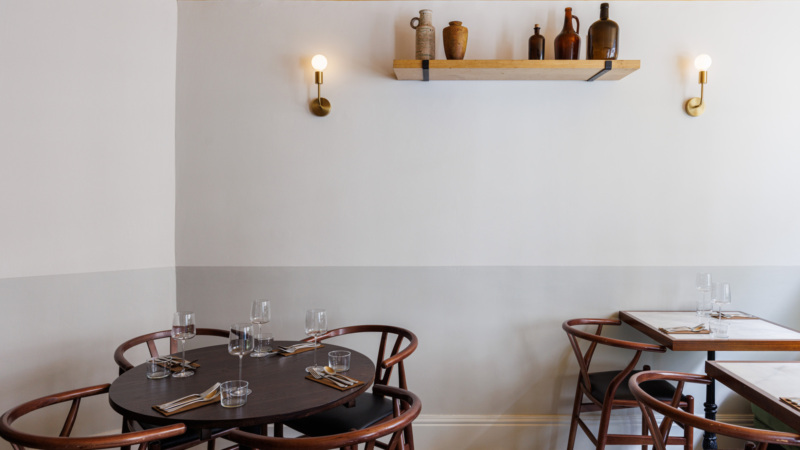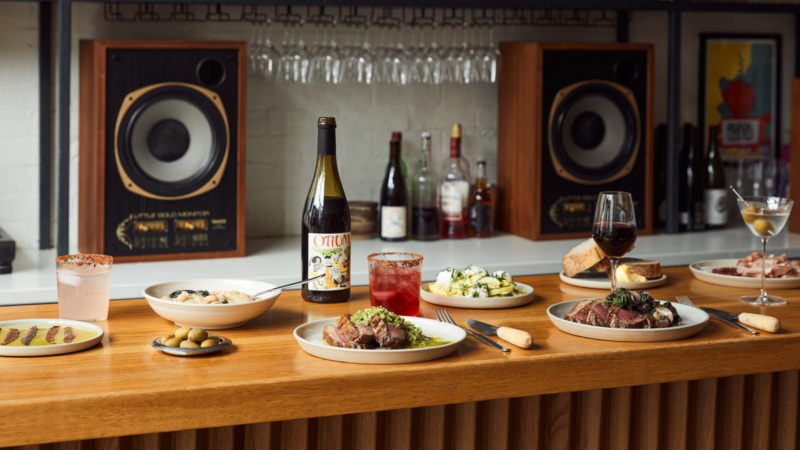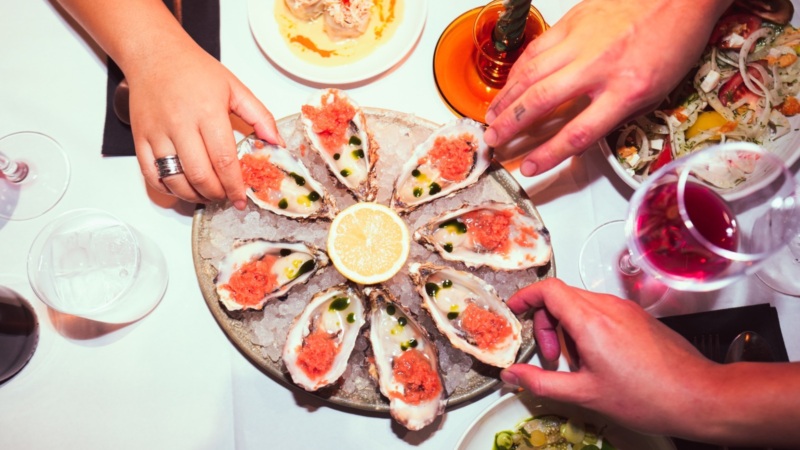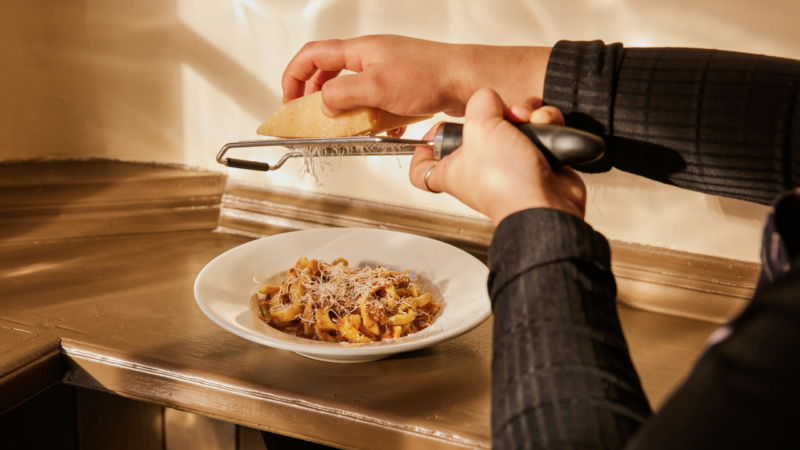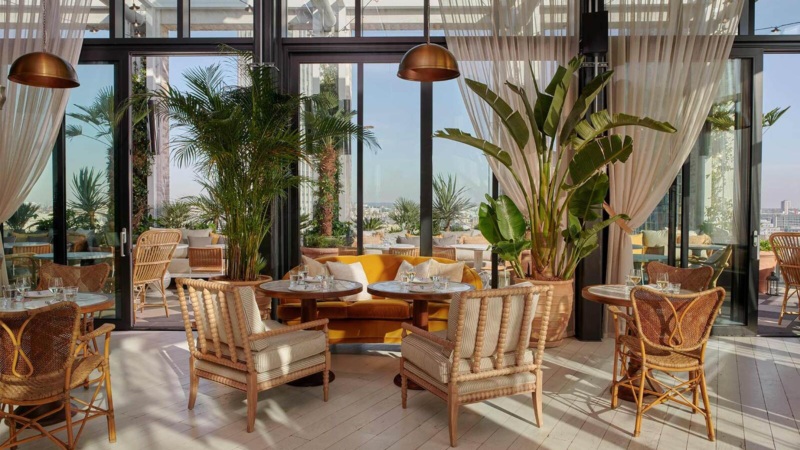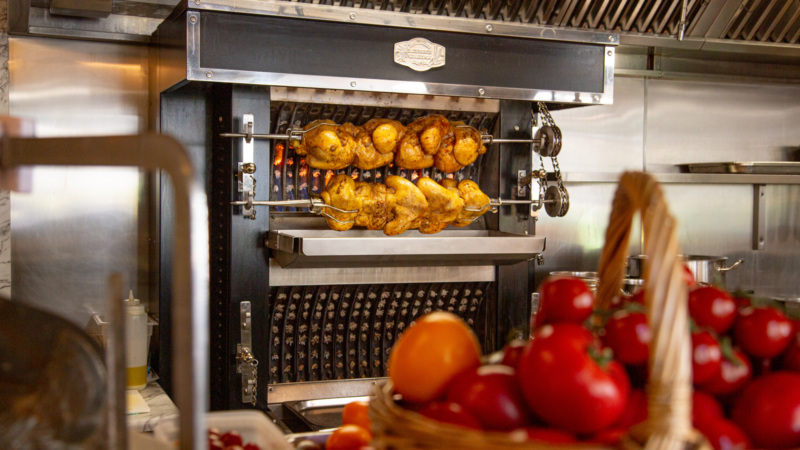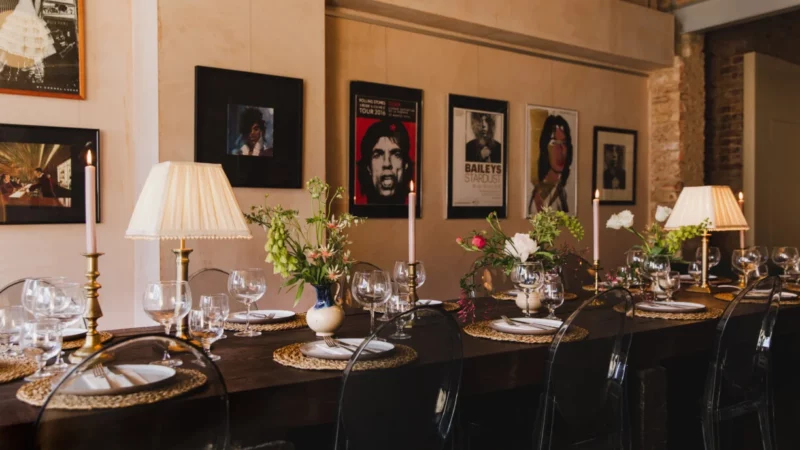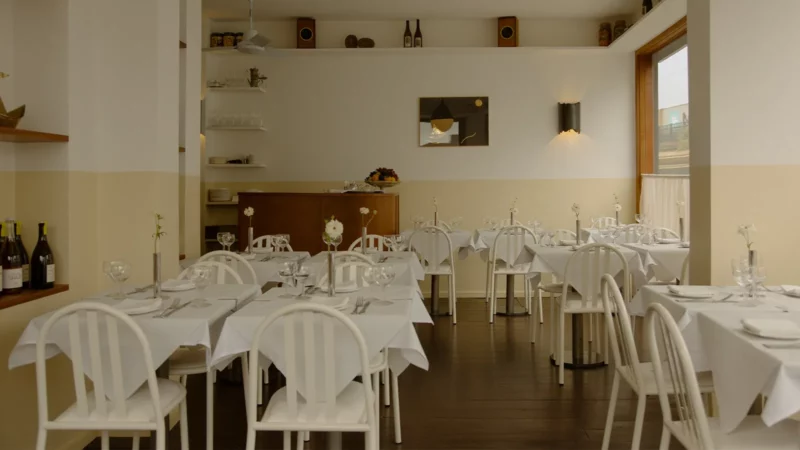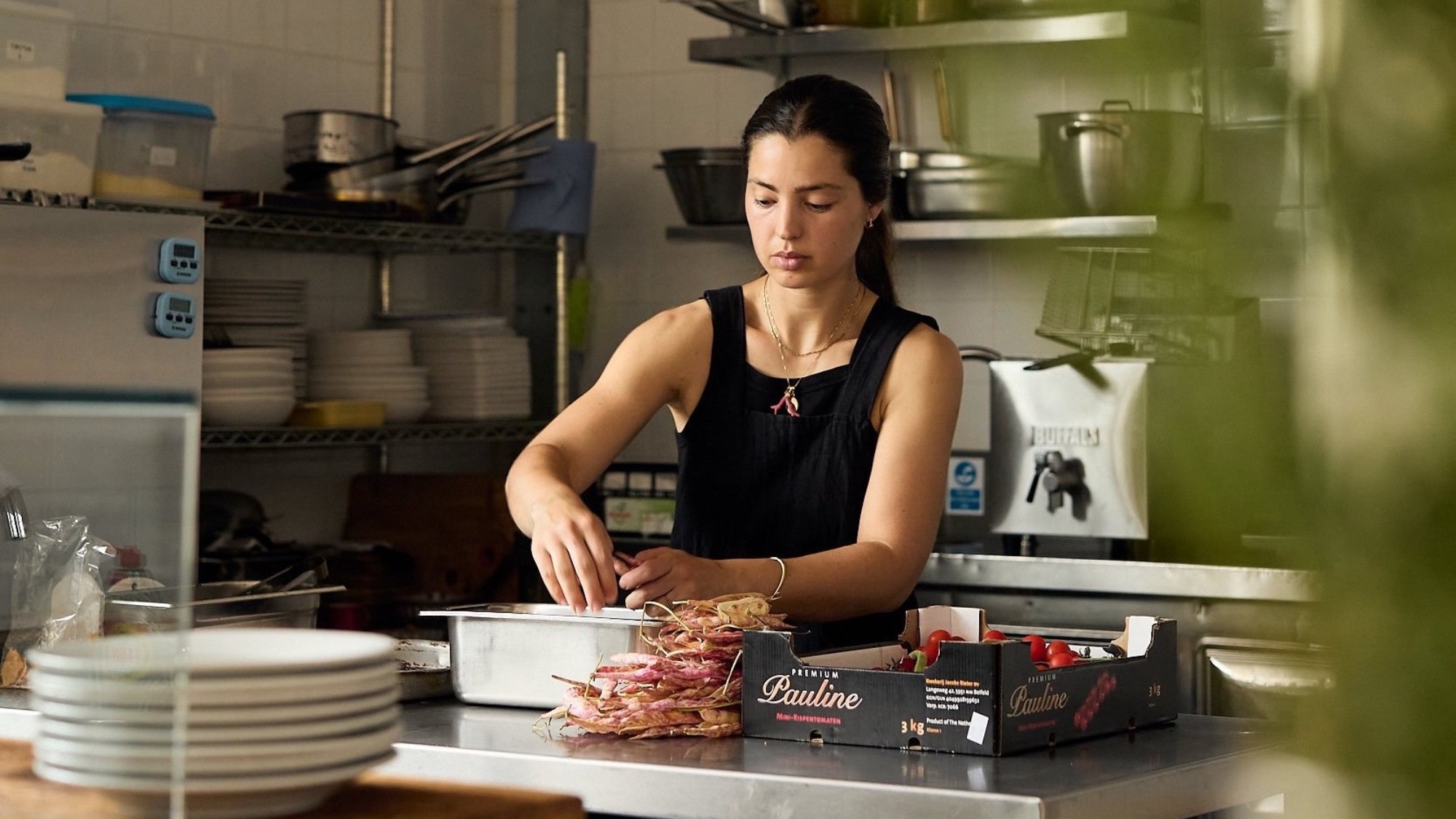
Hidden Away in Bow, Polentina Is a Museum of Forgotten Dishes
The antidote to all that is sane and safe about London restaurants is the wonderfully eccentric Polentina, a tiny Italian café housed within a sustainable garment factory somewhere in Bow, East London. Its creator is Sophia Massarella, a Canadian photographer in London who turned to professional cooking during the pandemic.
Massarella’s always been interested in food. One side of her family is from Frosinone in Lazio, and it was a common topic growing up. Plus, her photography – including a sweepingly ambitious and entirely uncommercial personal project on traditional citrus productions in Italy – often revolves around the subject. She started her food business slowly and characteristically eccentrically with a dark kitchen operation serving only polenta dishes which, she notes, is “a bit strange for this area. Or any area.”
With time, she introduced some pasta, then some salads, before after a year, taking over the staff canteen at Apparel Tasker, converting it from a poky room with a bank of microwaves into the glass-walled, wooden-tabled café that is today. From the early days, it’s grown not in size but in scope as Massarella goes deeper into Italian regional traditions and seeks to preserve them in this most unlikely spot in Bow.
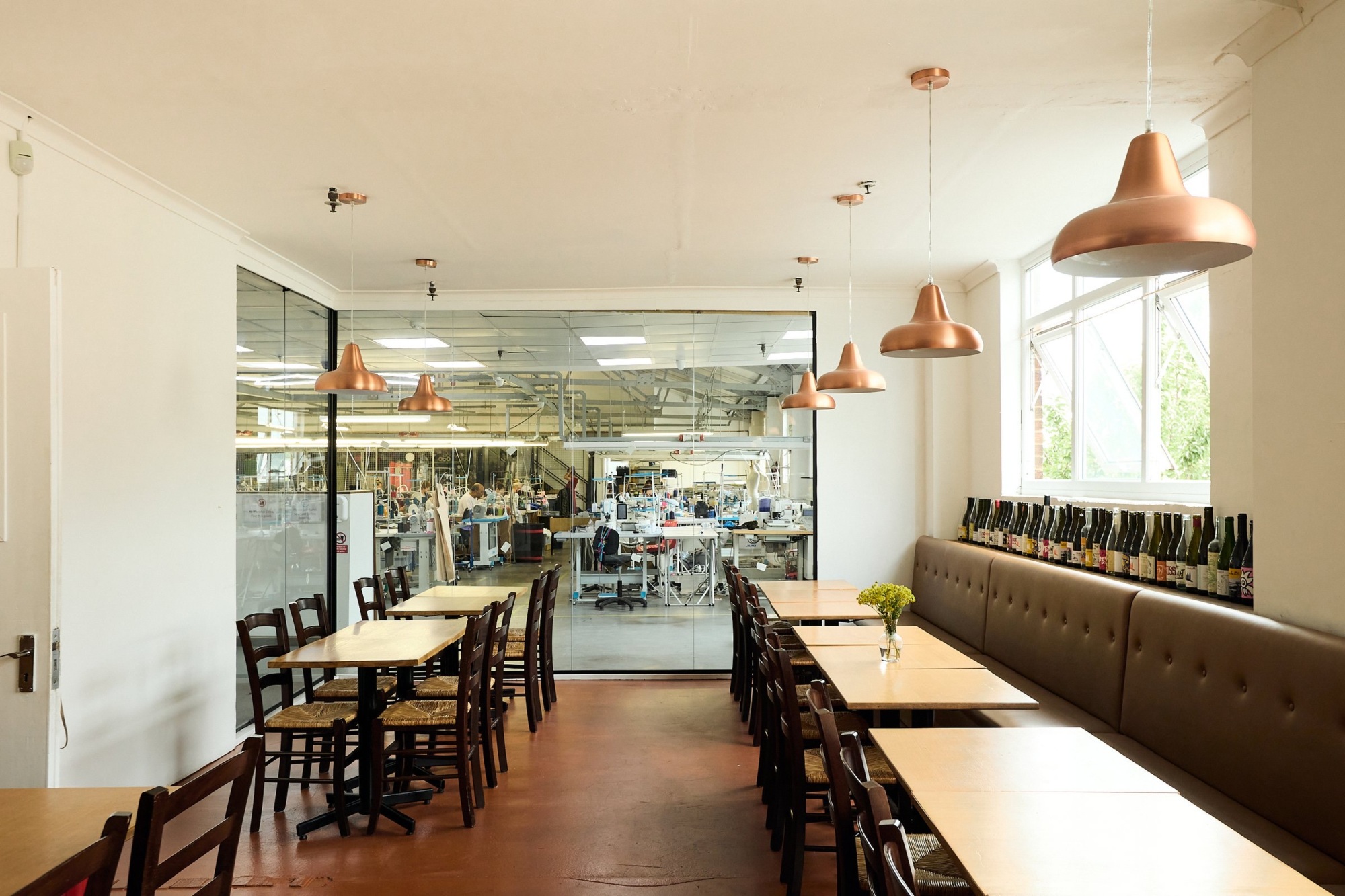
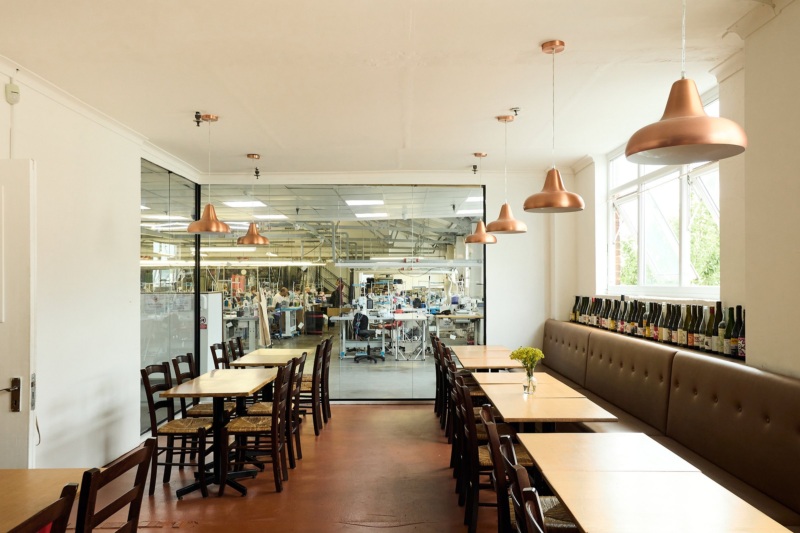
1. If you want to eat at Polentina, first you have to find it.
To someone from outside the London Borough of Tower Hamlets, you might describe Polentina’s location on the Empston Street industrial estate as the arse end of nowhere. To a local resident, you’d point them in the direction of Bromley-by-Bow tube, the big Tesco, and Google Maps. You know you’re in the right place when you pass Doorsteps, a greasy spoon container caff emblazoned with the words: London Paris Rome Tokyo Stepney. Polentina’s not far away at sustainable clothing manufacturer Apparel Tasker. Ring the bell and Massarella will buzz you up.
Once inside, you might find yourself sitting down to machinists or cutters on their lunch break, unpacking their Tupperware or enjoying a subsidised bowl of fresh pasta. In that regard, it’s a staff canteen perhaps not so dissimilar to The River Café or Towpath Café in the early days, minus the canal, minus the sunshine. Whatever. Polentina’s perfect as it is.
Massarella does leave E3 for the occasional supper club (Oranj Wines and Dina Wines have both played host) but the focus is on getting people to Polentina. “The location is half the reason it’s such a special place,” insists Massarella. “I like dragging people here!”
2. What’s on the menu this week won’t be on the menu next week.
“I never post the menu. That’s probably really bad,” confesses Massarella. “Most people show up not having any clue what’s on the menu.” If you want a vague idea of what you’re likely to get on any given day, give @polentinalondon a follow. The menu changes weekly and is scrawled on a blackboard. At lunchtime, it might be little more than three dishes such as marinda tomato salad; sausage and polenta; or sagne ‘ncannulate pasta with tomato sauce. No single dish costs more than around £13.” Off the record, there is a WhatsApp group of around 50 locals to whom Massarella send the menu daily. “If you’re in that group, you’ll know exactly what I’m cooking every day.”
There’s something refreshingly old school Italian about Polentina’s approach. Says Massarella: “I’m quite an old school person. Even my photography, it’s always on film. I do social media because it’s the only place that’s gotten me any exposure, but if I had my way I would just cook and hopefully people show up. This is what I want to be cooking. I’m a bit stubborn. If people like it, they come; if they don’t, they don’t.”
The joy for her, as a cook, is introducing people to dishes they’ve never heard of before, let alone tasted. “Some weeks I know exactly what I want to cook. Some weeks are trickier and I need to do some research. On a Sunday, I usually sit down with all my books spread out around me and just go through them. My house is full of very regional Italian cookbooks.”
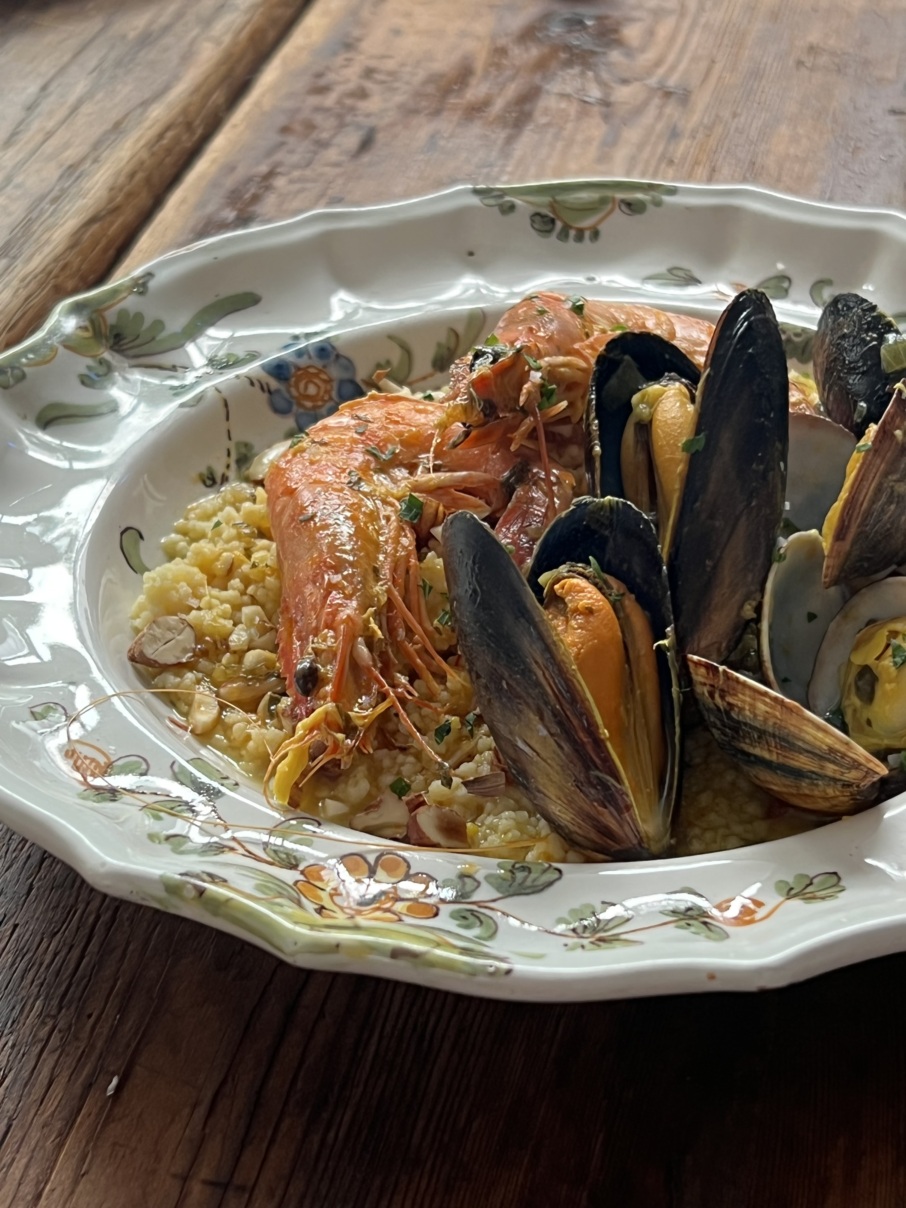
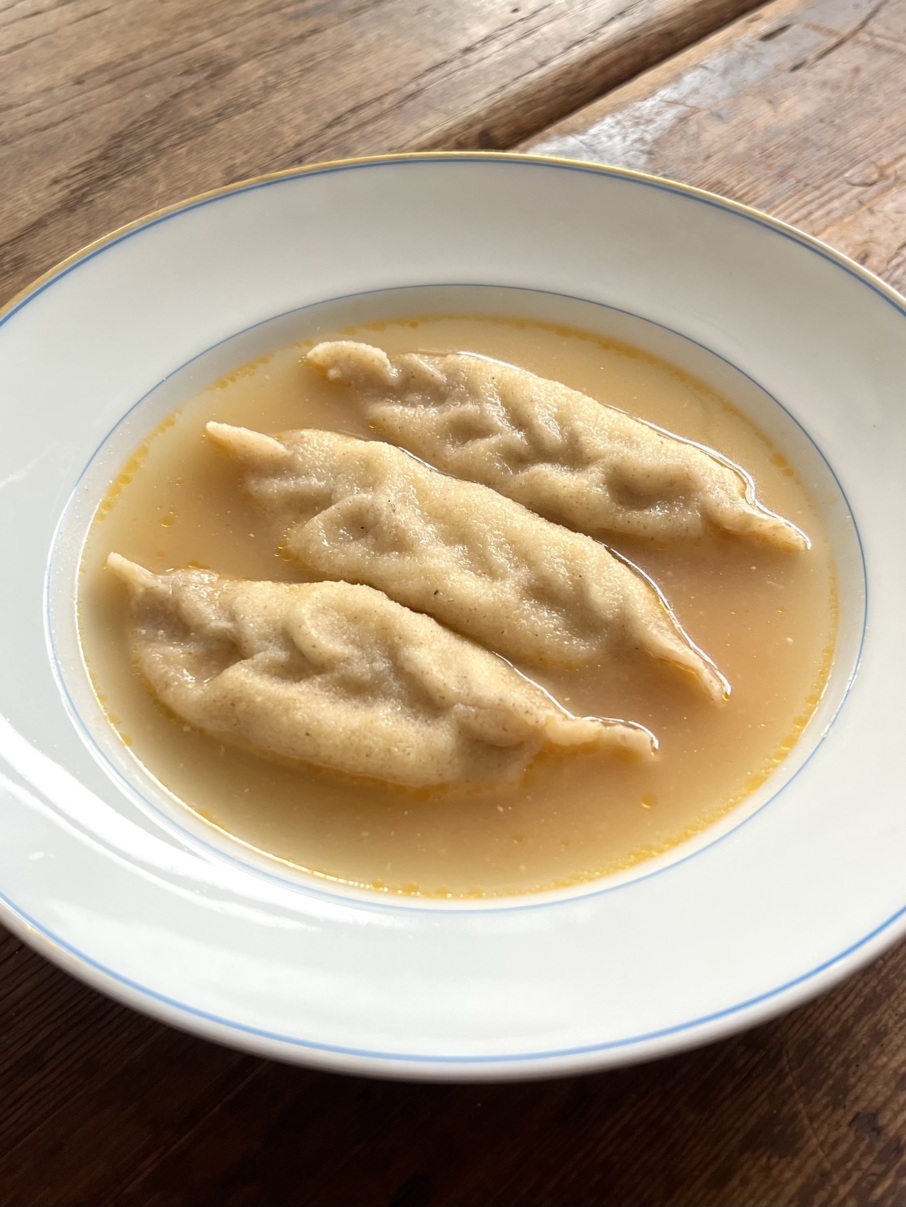
3. At Polentina, Sophia Massarella cooks like the Italian nonna you wish you had.
Everybody knows you need an Italian nonna if you want to be taken seriously as a cook. Massarella has one, and an Austrian Oma too. Both her grannies are “very, very traditional cooks”. “I spent a lot of time just eating at their houses and cooking.” At Polentina, in the winter, she’ll typically cook with more of a hearty Austrian slant; the rest of the time, she gives full rein to her Italian side.
“Both grandmothers have maybe eight dishes that they cycle through all the time. I just started cooking the dishes that I knew from them and then more and more I got interested in finding really old recipes.”
Some of the things we cook you won’t find unless your grandmother is cooking it for you.— Sophia Massarella
Take her soup obsession. Massarella grew up on brodo, zuppa, and all manner of suppen and regularly has one on the menu such as, recently, ‘scripelle ‘mbusse’. It’s in fact an Abruzzese dish but not unlike the ‘Frittatensuppe’ Massarella’s Austrian grandmother would make, only instead of omelette strips in beef broth, it’s whole rolled crêpes in chicken broth. Other favourites on the Austrian Oma side: Leberknödelsuppe (liver dumpling soup), Grießknockerlsuppe (semolina dumpling soup) and canederli, a south Tirolean variant of the Bavarian Semmelknõdel (bread dumpling). At Easter, only at Easter, she serves stracciatella alla romana, a kind of Roman egg drop soup, also beloved of Café Deco’s Anna Tobias (not uncoincidentally a Polentina fan).
“No matter how many times a restaurant says it’s regional Italian, it lacks that homecooked motherly feel, so I think when Italians come here that’s what they get most excited about. Any time I have chicken broth on the menu, their faces just light up ‘oh, it’s like my grandmother’s.’ The only thing I want to hear from people is that [my food] tastes like their grandmother’s.”
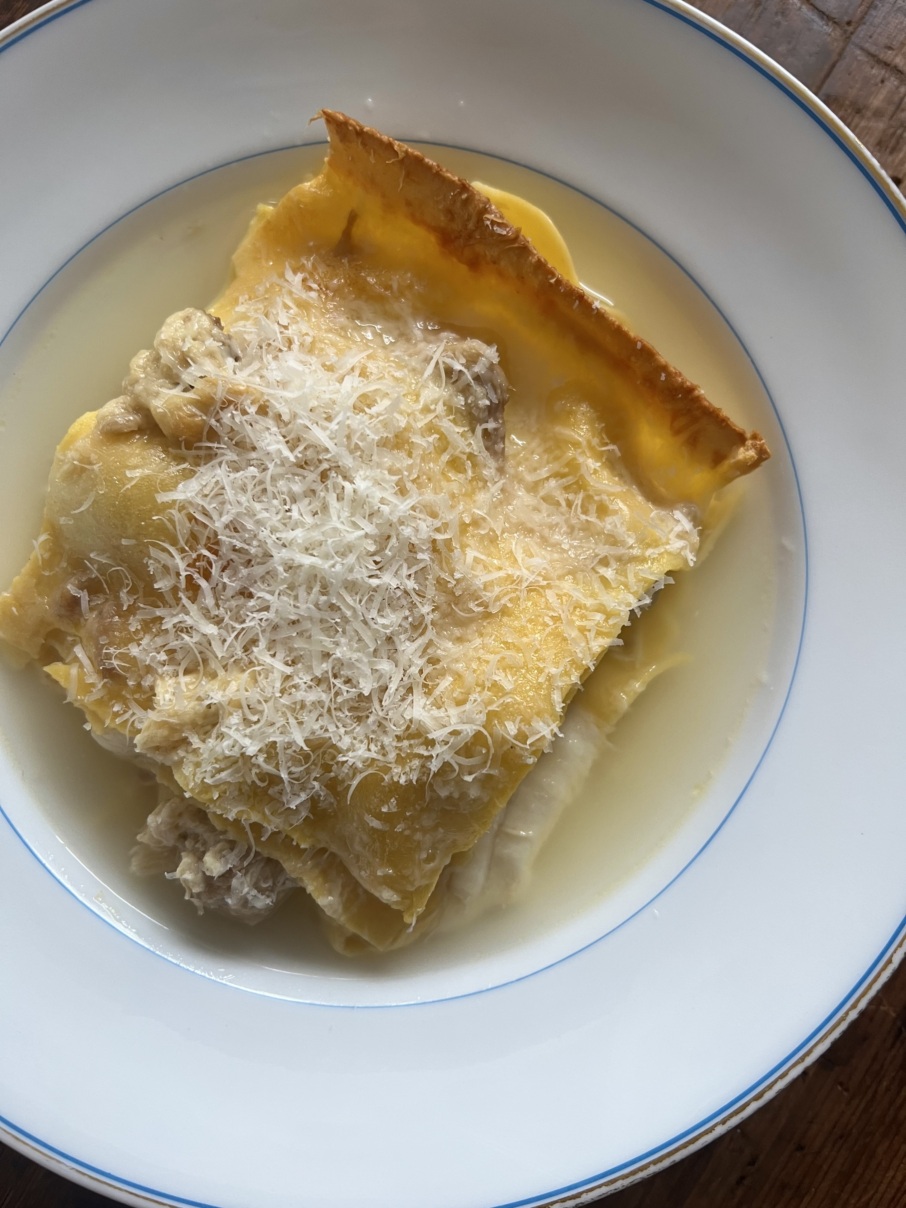
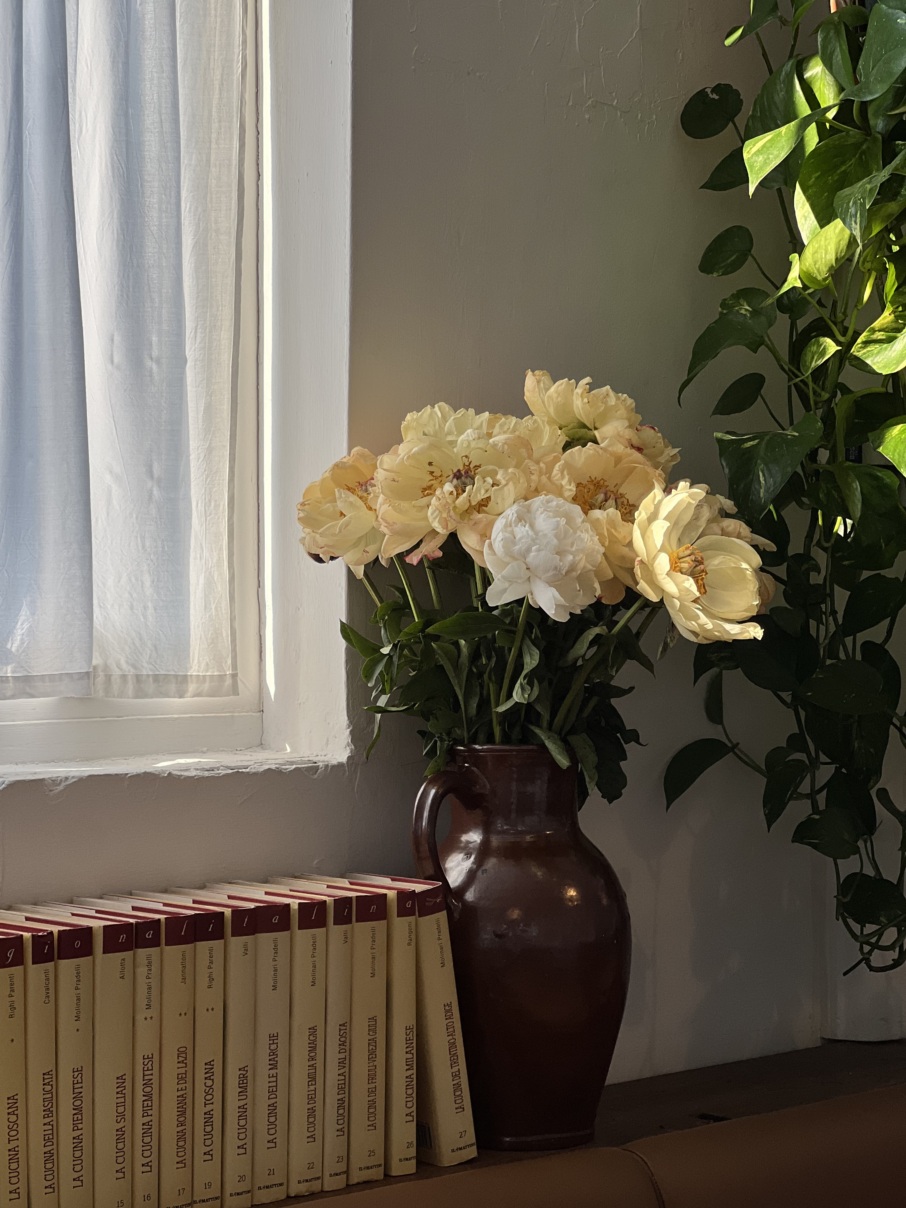
4. Polentina is a true expression of its creator’s obsessions.
“Everything I make is like a three-hour process. There’s often a festival around the dishes, or they’re something you’d make on a Sunday. There’s usually a reason why Italians eat what they eat.” They’re dishes that labour costs and conventional mise-en-place would rationalise out of existence. “I’ve never worked in restaurants. I just really like cooking! The nice thing about having a small place is we can do maybe 20 portions of everything. Even that is very time-consuming. Some of the things we cook you won’t find unless your grandmother is cooking it for you.” Are there dishes she’s never made or tasted before? “Oh yeah, all the time!”
Polentina could almost be a museum of forgotten dishes. Massarella has a penchant for stuffed dishes and layered dishes that have fallen out of fashion. She loves, for example, tiella barese or tiella riso patate e cozze, a baked dish involving layer after layer of potatoes, tomatoes, and mussels stuffed with risotto rice. For zucchini season, when the good grezzina zucchini are in, she’ll do sarchiapone di Atrani, a stuffed zucchini dish from the Amalfi Coast, filled with minced veal, pork, parmigiano, egg and ricotta, fried, then baked in tomato sauce. “It’s a really, really special dish I’ve never seen anywhere.” She’s also experimented with gnummareddi from Bari, with lamb’s heart, liver and kidney, parsley and pecorino wrapped in lamb caul; cappon magro, a retro layered seafood salad from Liguria; and Pugliese braciole, thin slices of veal – “it should really be horse” – rolled with parsley, garlic and pecorino, simmered in tomato sauces, and served with orecchiette maritate or ‘married orecchiette’, the two different shapes representing male and female. “You don’t see mixed pasta much in Italy. It’s either a big no-no or something very traditional like that.”
5. Polentina is growing (slowly).
One brief mention of Polentina on Vittles’ founder Jonathan Nunn’s Instagram stories caused a mini stampede. A review in the first edition of Vittles’ new restaurant column that followed caused another. As word spreads, more and more curious diners are venturing to E3. Massarella’s getting used to the idea of doing more evenings and has recruited a new team member. “Ollie’s the real chef,” she says of new hire Ollie Bass, ex Sessions Arts Club and Quo Vadis. “I’m the nonna in the kitchen.” (Tellingly, it was Massarella’s lasagne in brodo that moved Bass to apply). The kitchen is basic, to say the least, with little more than a dishwasher ‘that sometimes works’, two induction hobs, and a bain marie. “Really fancy!”
Supper clubs would be the obvious route but Massarella doesn’t do obvious. “I really like serving the way we do now. Also, I’m a bit shy. When it comes to walking out to a group of people that are just staring at you waiting for a description of a dish…I just want to hide in the kitchen now.”
She fantasises about having another place but is very happy just where she is. “I like how curious the place is. I want to keep it like that.”
Polentina is open Wednesday to Saturday for lunch, and Friday and Saturday for dinner. Book here.
Hilary Armstrong is a London-based journalist and editor. Follow her on Instagram and Twitter. Follow Resy, too.


